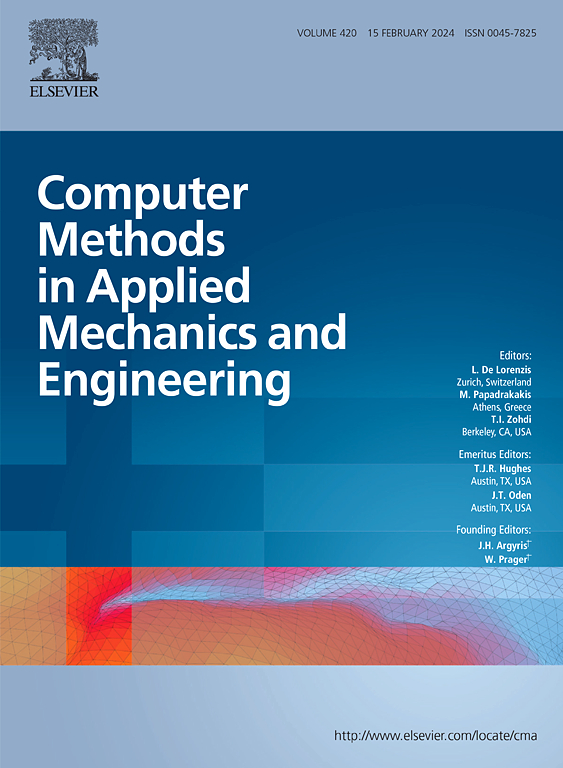A universal surrogate modeling method based on heterogeneous graph neural network for nonlinear analysis
IF 6.9
1区 工程技术
Q1 ENGINEERING, MULTIDISCIPLINARY
Computer Methods in Applied Mechanics and Engineering
Pub Date : 2025-02-01
DOI:10.1016/j.cma.2025.117793
引用次数: 0
Abstract
Nonlinear finite element analysis (FEA) is typically time-consuming, primarily due to its reliance on incremental solution schemes which require repeated stiffness matrix assembly and inversion at each step. In scenarios like structural optimization, where numerous FEA iterations are needed, deep learning-based surrogate models are usually employed as alternatives owing to their extremely high inference efficiency. However, they may exhibit weak generalization ability and produce predictions that violate established physical laws. Furthermore, their network types, such as multi-layer perceptron (MLP), limit the scalability of surrogate modeling methods, as a single model is restricted to a specific structural topology. To address these issues, we propose a universal surrogate modeling method based on heterogeneous graph neural network (HGNN) for nonlinear analysis, enhancing both scalability and generalization. Our method starts by decomposing an arbitrary engineering structure into components of different types and representing it as heterogeneous graph data, which establish a foundation for the method’s universality. Then, each increment step in the nonlinear FEA is used to extract a new sample, achieving significant data augmentation without additional computation. To further improve prediction accuracy, we leverage a physical loss derived from the nonlinear equations of each increment step to direct the model’s training process. Numerical experiments on the car body frame and car roof achieved prediction accuracies of 99.45% and 99.66%, respectively, demonstrating our method’s feasibility and efficacy.
求助全文
约1分钟内获得全文
求助全文
来源期刊
CiteScore
12.70
自引率
15.30%
发文量
719
审稿时长
44 days
期刊介绍:
Computer Methods in Applied Mechanics and Engineering stands as a cornerstone in the realm of computational science and engineering. With a history spanning over five decades, the journal has been a key platform for disseminating papers on advanced mathematical modeling and numerical solutions. Interdisciplinary in nature, these contributions encompass mechanics, mathematics, computer science, and various scientific disciplines. The journal welcomes a broad range of computational methods addressing the simulation, analysis, and design of complex physical problems, making it a vital resource for researchers in the field.

 求助内容:
求助内容: 应助结果提醒方式:
应助结果提醒方式:


